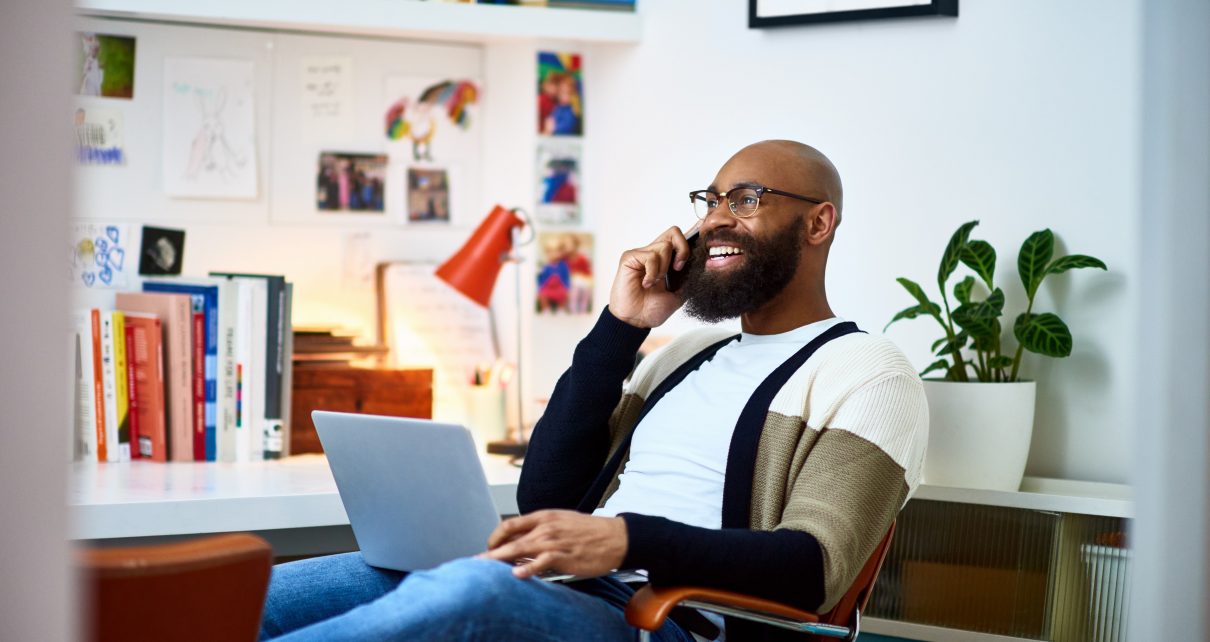Before the coronavirus pandemic, there was a loneliness epidemic. By some estimates, two thirds of Americans often or always felt lonely in 2019. So when quarantines and shelter-in-place orders began, I was one of many social scientists who raised concerns that loneliness might worsen in the months to come. Would prolonged isolation trigger a “social recession,” as former U.S. surgeon general Vivek H. Murthy and physician Alice T. Chen put it?
Now, thanks to early research, we are starting to get answers—and the data give us reason to hope. According to several recent studies, loneliness has not only leveled out but, in certain cases, actually improved. Social distancing has made us recognize the importance of our relationships, which influence health and mortality as much as factors such as smoking and excessive drinking.
In a study published in the American Psychologist, researchers surveyed a group of people aged 18 to 98 across the U.S. at three different times: in late January and early February, before the U.S. outbreak; in late March, after social distancing was first recommended; and in late April, after shelter-in-place orders had been underway for a month. Each time, they polled participants using the UCLA Loneliness Scale and asked them to rate the statement, “I receive the social and emotional support that I need.” On average, the researchers found no significant changes in loneliness. In fact, perceived social and emotional support actually increased.
Another study conducted in the U.S., the U.K. and 26 other countries echoed these findings. The researchers surveyed the same individuals both before and during the pandemic, also using the UCLA Loneliness Scale. The responses indicate that, despite social distancing, people’s feelings of loneliness slightly improved.
Both studies stand out in that they followed the same sets of participants starting before the pandemic. In contrast, several papers that have reported a rise in loneliness used cross-sectional data—information from a single point in time—after the pandemic was already underway, meaning we can’t be sure if the individuals they surveyed were more or less lonely before. Other investigations have revealed additional nuances: After monitoring daily experiences of loneliness in the first month of lockdown, a preprint study in Germany reported an initial increase, followed by a decrease. This finding suggests that sudden isolation triggered a spike, but people quickly adapted and found ways to maintain social connection despite the circumstances.
Surprisingly, it seems that levels of loneliness around the world have remained generally stable. How have we avoided a social fallout? First, social isolation does not necessarily cause loneliness. While isolation is the objective state of being alone, loneliness is the subjective experience of disconnection, which means that you can feel lonely while surrounded by people or connected while by yourself. Amid COVID-19, most of us are more isolated, yet that doesn’t mean we are lonelier.
In the past few months, we’ve made a point to prioritize connection. The pandemic has made people more aware and appreciative of their relationships. Researchers have long known that social connection reduces your risk for illness, disease and early death. But only recently has the rest of society caught up. Whether we do so in person or virtually, spending time with friends, family and neighbors can bolster our social health—the dimension of well-being that comes from connection.
Similarly, taking action to support our communities through volunteering, making masks or thanking health care workers can confer a general sense of belonging. Following the September 11 terrorist attacks, researchers observed an influx of kindness, love and teamwork. For many of us, the pandemic has inspired similar solidarity and a spirit that “we are all in this together.”
Technology has also allowed us to avoid a social decline. Local nonprofits and national organizations offer remote programs, such as the Institute on Aging’s Friendship Line for people aged 60 and older and the AARP’s mutual aid groups for people to support each other within their community. Innovation has accelerated in the technology sector, with platforms emerging to better meet our connection needs and existing products launching new features, such as Nextdoor’s Neighbors Helping Neighbors program. Lawmakers are also acknowledging the need for political action to prevent loneliness: In March the House of Representatives passed the Supporting Older Americans Act of 2020, which included provisions to address social isolation.
If these trends continue, the social recession we feared could turn out to be a social revolution. Ironically, the pandemic may catalyze a cultural shift in which neighborhoods and communities band together to build healthy connection habits. In the process of reimagining cities, buildings, schools and workplaces, we have an opportunity to design our spaces and institutions in ways that enhance our social well-being. In short, it’s possible that a symptom of the coronavirus pandemic could become a cure for the loneliness epidemic.
To be sure, these trends don’t mean that everyone has felt connected. Loneliness may not have changed on average, but some groups are more affected than others. In the American Psychologist study, older adults initially felt lonelier, and people who lived alone or had a chronic disease reported more loneliness overall. Other evidence suggests that younger generations, men and residents of individualistic countries are particularly susceptible to loneliness. Meanwhile the digital divide has left older adults especially vulnerable because many lack the means to socialize or seek support remotely.
We still have a long way to go to reduce loneliness at the population level. But at the very least, so far, COVID doesn’t seem to have made it worse. With cases fluctuating and states closing down again, it will take a concerted effort to ensure that we stay socially connected even while physically separated.
We all feel powerless when it comes to the coronavirus, but we still have some control over our social lives and our social health. We can call our loved ones, participate in quarantine pods, reach out to isolated neighbors and organize virtual gatherings. Now is the time to strengthen bonds within families, neighborhoods and communities of all kinds—because by doing so, we will not only endure; we might emerge better off.




